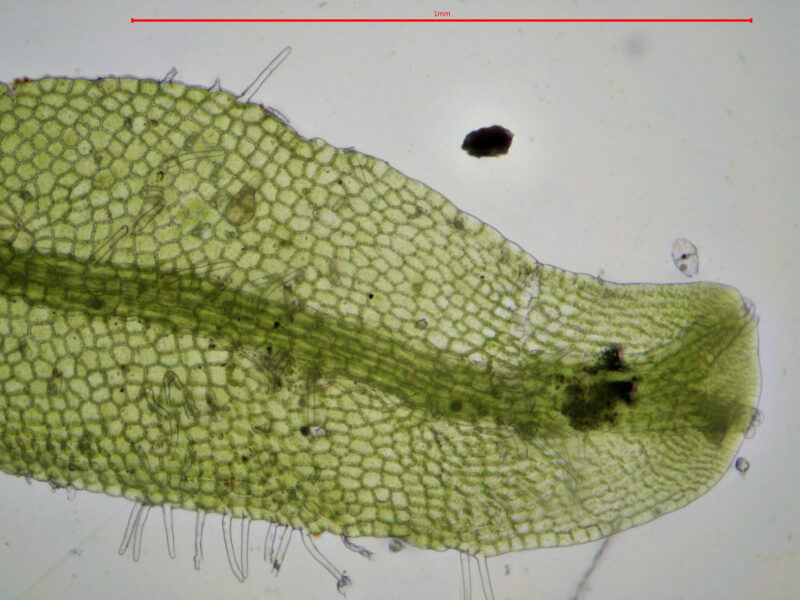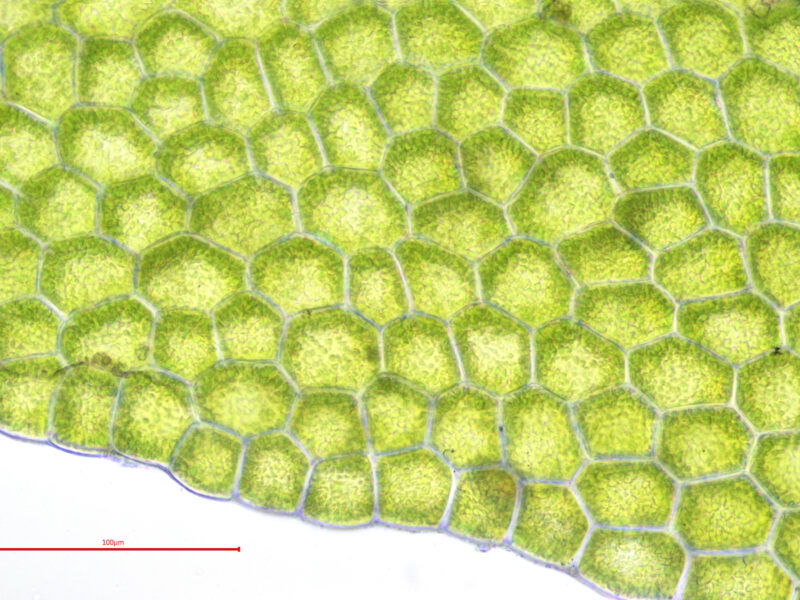Identification notes
For such a simple-looking thallose liverwort, M. furcata is surprisingly rich in anatomical features, most of which only become apparent under the microscope.
It is dioicous and so plants will either be male or female but not both. Reproductive structures are found in bud-like, highly modified branches that more or less enclose the archegonia (female) or antheridia (male) on the underside of the thallus. Male branches have a costa, which gives them a stripy appearance. Females tend to lack this, but are often very hairy-looking.
M. furcata often also reproduces asexually via gemmae which are often disc-like to linear, usually lack a costa and are produced on the thallus margins (sometimes on the costa). Branches look very similar and they cannot always be differentiated.
Read the Field Guide account
















